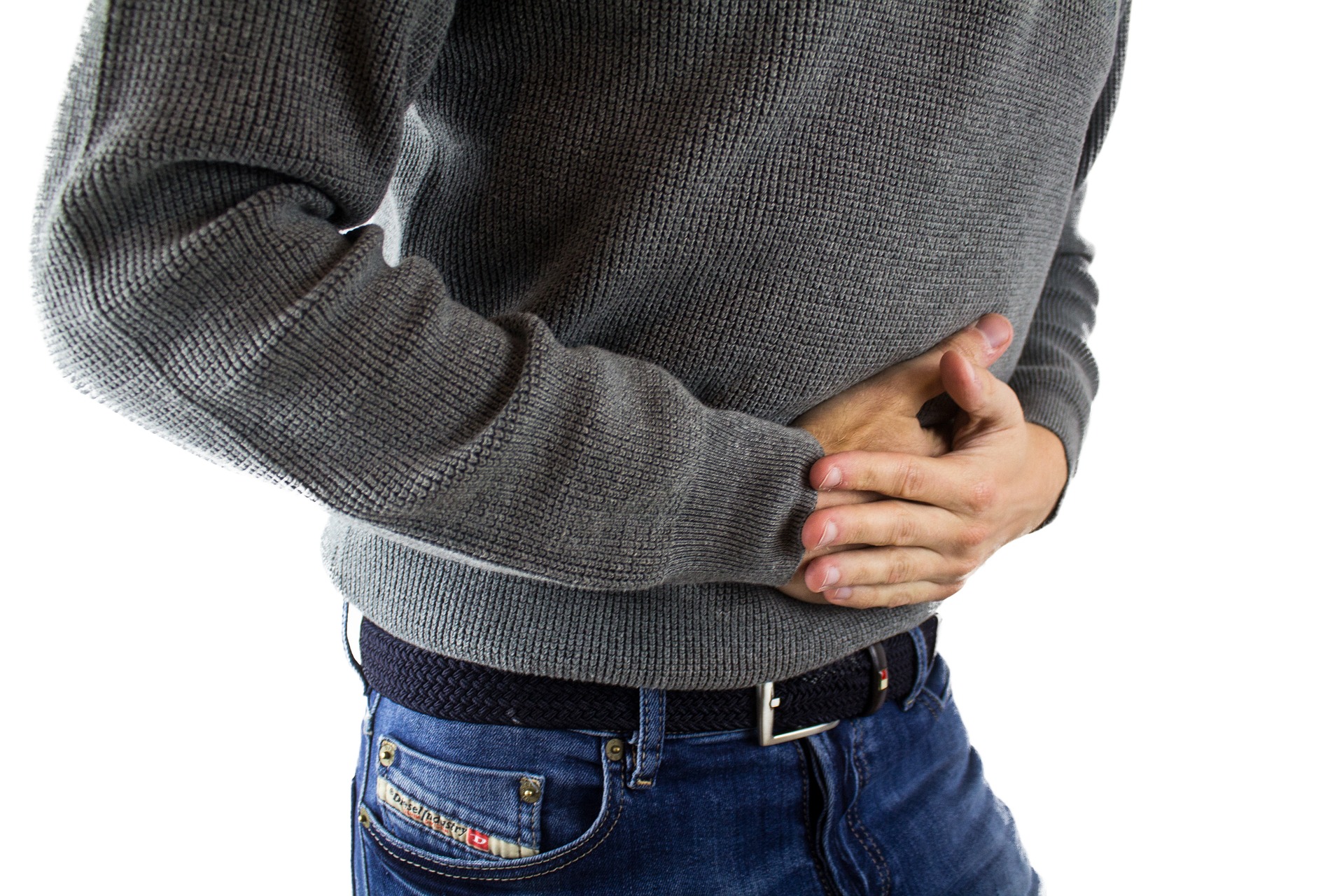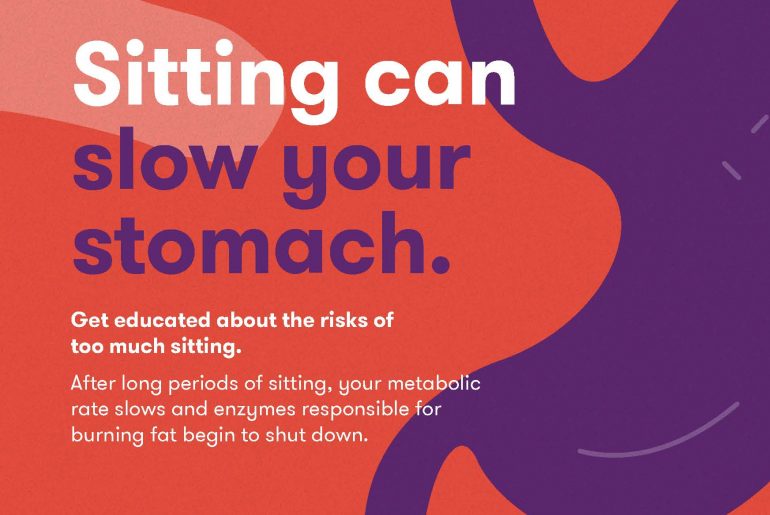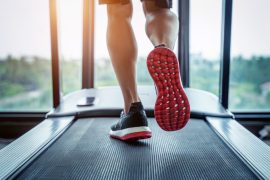Have you ever experienced stomach pains, discomfort, or indigestion after sitting too long at your desk? While exercise has long been anecdotally thought to influence digestion, more recent research has been exploring the impact of physical inactivity on digestion. This post will explore some ways exercise and inactivity influences your gut, as well as the implications for your health.
But first, what does it mean to say that sitting “slows your stomach?” One way to consider it would be gastric emptying, or the movement of stomach contents into the small intestine (how quickly food leaves the stomach). Another possibility is gastrointestinal transit time, which is the time it takes something you eat to move from your mouth through your entire gastrointestinal tract. Both these definitions have been linked to physical activity and inactivity, as have health outcomes such as constipation and colorectal cancer.
How physical inactivity slows your stomach:
 When you aren’t moving, your gut isn’t moving much either. An extreme example can be seen in people who are confined to bed or held immobile. Hospital inpatients are another population at risk of prolonged physical inactivity, and increased rates of constipation are seen in this population. However it can be difficult studying the effect of immobility on gastrointestinal health in these patients due to coexisting factors such as existing illness, medications and other treatments that could be influencing the effect. Furthermore effects in hospitalised elderly patients may not reflect effects in healthy younger adults.
When you aren’t moving, your gut isn’t moving much either. An extreme example can be seen in people who are confined to bed or held immobile. Hospital inpatients are another population at risk of prolonged physical inactivity, and increased rates of constipation are seen in this population. However it can be difficult studying the effect of immobility on gastrointestinal health in these patients due to coexisting factors such as existing illness, medications and other treatments that could be influencing the effect. Furthermore effects in hospitalised elderly patients may not reflect effects in healthy younger adults.
One study sponsored by the Italian Space Agency found that of ten healthy young men assigned to 35 days of strict head-down bed-rest, 60% experienced onset of functional constipation, and there was increased flatulence and decreased stool frequency.
The effect of sedentary behaviour and physical inactivity in the general population is perhaps best considered in relation to how the opposite affects your gut. That is, how exercise and physical activity work to increase the speed of digestion.
How exercise and other physical activity can speed it up again:
Gastric emptying, or the time it takes food that enters the stomach to continue to the small intestine, has been linked to appetite regulation, gastric symptoms and availability of nutrients. It has been found that different amounts of exercise have different effects on gastric emptying. While it is fastest at low intensity exercise and walking, it is slower at higher exercise intensities. That is, while mild physical activity can stimulate gastric emptying, increasing intensity leads to food staying in your stomach longer. Taking a walk after a meal can speed up your digestion of the meal, although it has also been found that exercise before a meal has little or no effect on the gastric emptying rate of food you eat afterwards. Furthermore there is a large amount of variation between people in factors that can influence this effect, such as age, sex, eating behaviour, body composition and how much exercise one is accustomed to.
The effect of exercise on colonic transit time is more controversial. One study with ten healthy young adult volunteers found that total gut transit time for food was significantly lower when the volunteers spent an hour doing moderate exercise (cycling or jogging) each day for a week than if they spent that time resting in a chair. Another study among South Korean psychiatric inpatients found that a 12-week long aerobic exercise program reduced colonic transit time. However not all studies find that physical activity decreases colonic transit time. This inconsistency could be due to differences between individuals, the number of participants in studies or other factors exerting effects over results, but currently remains unresolved.
There is a limit to the positive effects of exercise on your gut. While mild to moderate levels of exercise is helpful, strenuous exercise and dehydration can be harmful for your gut, especially for those underprepared or untrained. As you reach high levels of exercise there is less blood being sent to your gut, which can lead to nausea, vomiting, abdominal pain, diarrhoea and even bleeding. This is more common in runners compared to cyclists or swimmers.
What does this all mean for your health?
 Constipation is a common health problem that has significant impacts on the quality of life of people who suffer it. It is defined by the presence of symptoms including straining during toilet visits, hard and lumpy stools, feelings of incomplete emptying and infrequent stools. It may cause discomfort and pain associated with increased gas, abdominal bloating and physical difficulties passing stools. It is a problem that affects many people, with estimates in Western countries ranging 2-27% of the population, and is more common in women, children and the elderly. A study that conducted postal survey of Australian women indicated prevalence of 14% in women 18-23 years, 26.6% age 45-50 years, and 27% 70-75 years old. While it is associated with increased colonic transit time, not all people with constipation experience increased transit time.
Constipation is a common health problem that has significant impacts on the quality of life of people who suffer it. It is defined by the presence of symptoms including straining during toilet visits, hard and lumpy stools, feelings of incomplete emptying and infrequent stools. It may cause discomfort and pain associated with increased gas, abdominal bloating and physical difficulties passing stools. It is a problem that affects many people, with estimates in Western countries ranging 2-27% of the population, and is more common in women, children and the elderly. A study that conducted postal survey of Australian women indicated prevalence of 14% in women 18-23 years, 26.6% age 45-50 years, and 27% 70-75 years old. While it is associated with increased colonic transit time, not all people with constipation experience increased transit time.
Inadequate physical activity and excessive sedentary behaviour have been found to be a risk factor for constipation in women over 50 years and Taiwanese and Hong Kong adolescents. Inversely, physical activity has been trialled as a treatment for chronic constipation, with mixed results. However one paper looking at multiple previous studies found that aerobic exercise such as walking improved constipation symptoms as well as quality of life and wellbeing in patients with constipation. They did however note that these studies usually only found these positive outcomes with at least 140 minutes of exercise per week. As well as constipation, mild physical activity has been found to reduce gas retention, abdominal distension and bloating.
Colorectal (bowel) cancer is the third most diagnosed cancer in Australia, as well as one of the most common causes of cancer death. Multiple factors increase your risk, including family history, older age, high alcohol or red meat consumption, and smoking. Most relevant to this post however, is that it has been found that your risk of colorectal cancer can be reduced by regular physical activity and healthy bowel motility, as well as increased water intake. Another study found that increased occupational energy expenditure and fewer sitting hours were protective against colorectal cancer in male workers. The Cancer Council attributes 14% of colon cancers to physical inactivity and recommends at least 30 minutes of moderate exercise each day in order to reduce your risk.
Tips for a healthy gut
- Take some time for a short walk around the office, especially after a meal. Walking back to the office or home after lunch or dinner is a good way you can help your digestion
- Reduce your risk factors for constipation and colorectal (bowel) cancer by increasing fluid intake, regular physical activity, increasing the fibre in your diet, and reducing meat intake. Some foods that are high in fibre include bran, prunes, fruits, vegetables and nuts. Increasing your fibre intake can increase gas and bloating so it is recommended to introduce this change in diet gradually.
- Drinking enough water throughout the day is an important factor of bowel health, but refilling your glass can also be an opportunity to break up your sitting time!
This article was written by Anna Rasmussen while she completed a research subject at the University of Queensland with the BeUpstanding team.









Comments are closed.